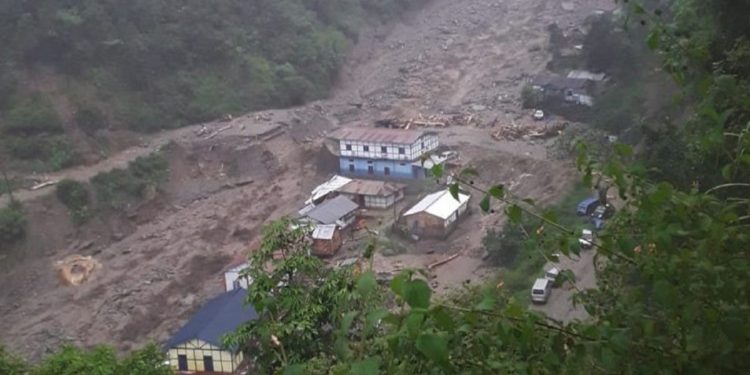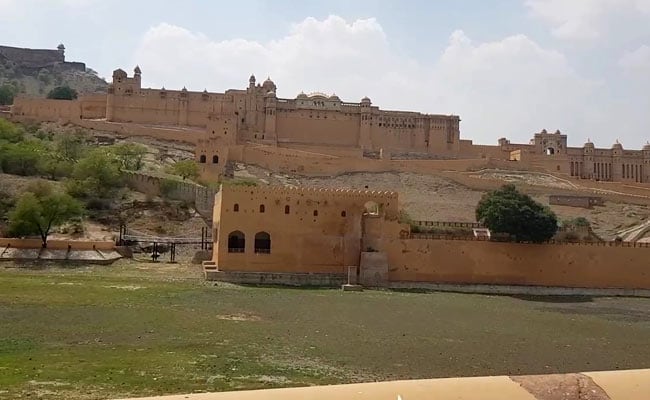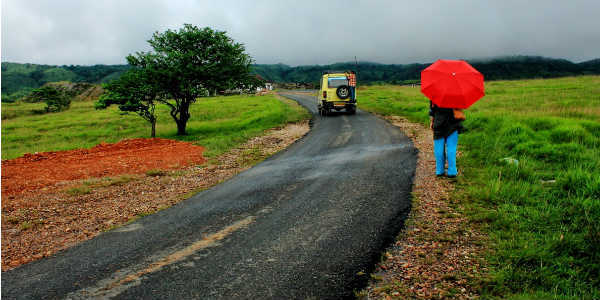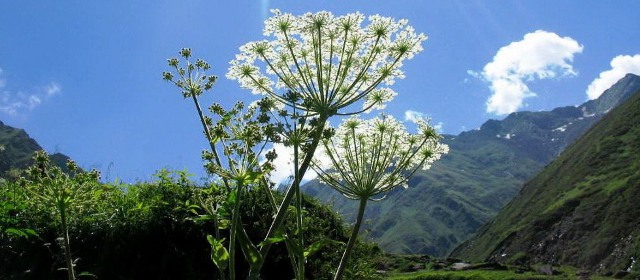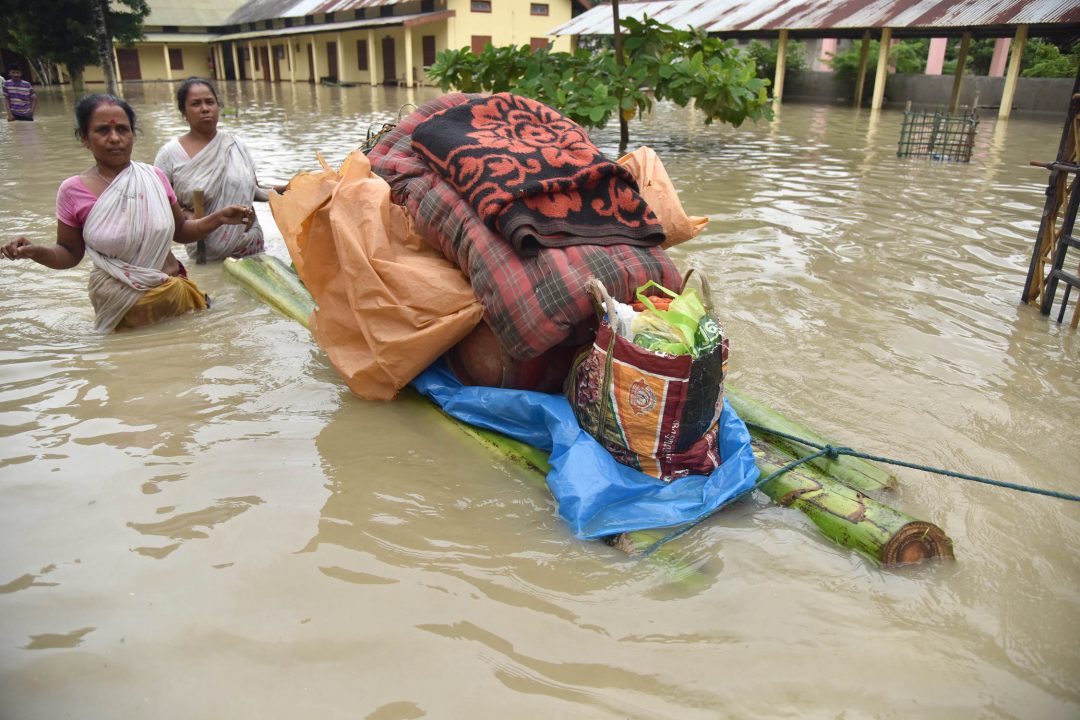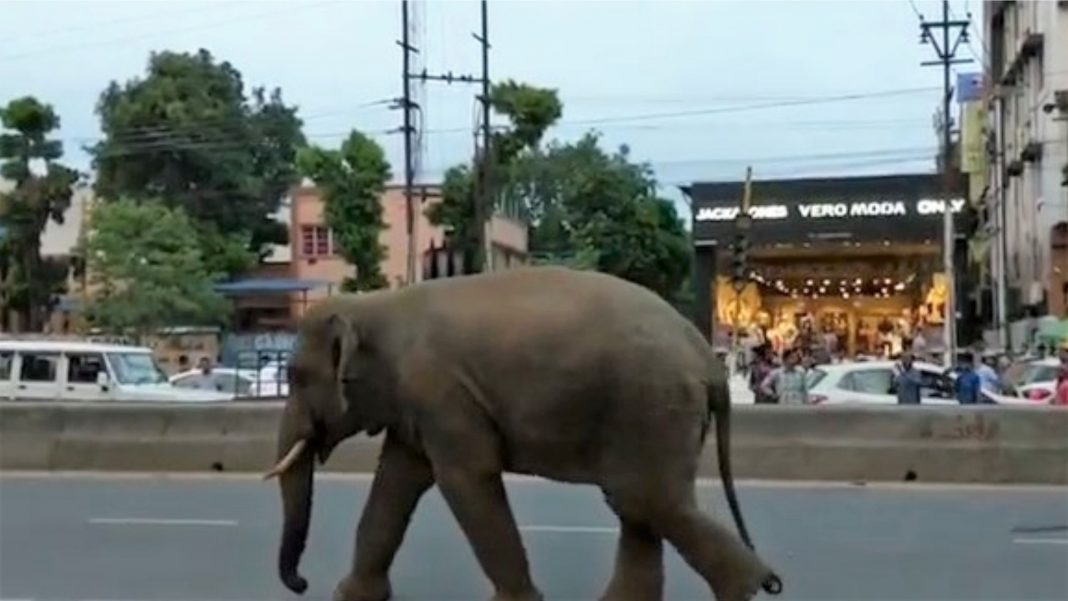by Gaia Vince
Drowned cities; stagnant seas; intolerable heatwaves; entire nations uninhabitable… and more than 11 billion humans. A four-degree-warmer world is the stuff of nightmares and yet that’s where we’re heading in just decades.
While governments mull various carbon targets aimed at keeping human-induced global heating within safe levels – including new ambitions to reach net-zero emissions by 2050 – it’s worth looking ahead pragmatically at what happens if we fail. After all, many scientists think it’s highly unlikely that we will stay below 2C (above pre-industrial levels) by the end of the century, let alone 1.5C. Most countries are not making anywhere near enough progress to meet these internationally agreed targets.
Climate models predict we’re currently on track for a heating of somewhere between 3C and 4C for 2100, although bear in mind that these are global average temperatures – at the poles and over land (where people live), the increase may be double that. Predictions are tricky, however, as temperatures depend on how sensitive the climate is to carbon dioxide (CO2). Most models assume that it is not very sensitive – that’s where the lower 3C comes from – but a whole new set of models to be published in 2021 finds much greater sensitivity. They put heating at around 5C by the end of the century, meaning people could be experiencing as much as 10C of heating over land.
Such uncertainty isn’t ideal, but for our purposes let’s plump for an entirely feasible planetary heating of 4C by the end of the century. If that seems a long time away, consider that plenty of people you know will be around then. My children will be in their 80s, perhaps with middle-aged children and grandchildren. We are making their world and it will be a very different place.
Four degrees may not sound like much – after all, it is less than a typical temperature change between night and day. It might even sound pleasant, like retiring from the UK to southern Spain. However, an average heating of the entire globe by 4C would render the planet unrecognisable from anything humans have ever experienced. The last time the world was this hot was 15m years ago during the miocene, when intense volcanic eruptions in western North America emitted vast quantities of CO2. Sea levels rose some 40 metres higher than today and lush forests grew in Antarctica and the Arctic. However, that global heating took place over many thousands of years. Even at its most rapid, the rise in CO2 emissions occurred at a rate 1,000 times slower than ours has since the start of the Industrial Revolution. That gave animals and plants time to adapt to new conditions and, crucially, ecosystems had not been degraded by humans.
Things look considerably bleaker for our 2100 world. Over the past decade, scientists have been able to produce a far more nuanced picture of how temperature rise affects the complexities of cloud cover and atmospheric and oceanic circulation patterns and ecology. We’re looking at vast dead zones in the oceans as nutrients from fertiliser runoff combine with warmer waters to produce an explosion in algae that starve marine life of oxygen. This will be exacerbated by the acidity from dissolved CO2, which will cause a mass die-off, particularly of shellfish, plankton and coral. “We will have lost all the reefs decades before 2100 – at somewhere between 2C and 4C,” says Johan Rockström, director of the Potsdam Institute for Climate Impact Research in Germany.Advertisement
Sea levels will be perhaps two metres higher and, more worryingly, we will be well on our way to an ice-free world, having passed the tipping points for the Greenland and west Antarctic ice sheets, committing us to at least 10 metres of sea-level rise in coming centuries. That’s because as ice sheets melt, their surface drops to a lower altitude where it is warmer, speeding up melting in a runaway feedback loop. Eventually, dark, heat-absorbing land is exposed, speeding the melting process even more. By 2100, we will also have lost most low-latitude glaciers, including two-thirds of the so called third pole of the Hindu Kush-Karakoram-Himalayan mountains and Tibetan plateau that feeds many of Asia’s important rivers.
However, most rivers, especially in Asia, will flood more often, according to research by Richard Betts, head of climate impacts at the Met Office Hadley Centre, because the hotter atmosphere will produce more intense monsoons, violent storms and extreme rainfall. His studies predict a wide equatorial belt of high humidity that will cause intolerable heat stress across most of tropical Asia, Africa, Australia and the Americas, rendering them uninhabitable for much of the year. Tropical forests of heat-tolerant species may well thrive in this wet zone with the high CO2 concentrations, especially with the disappearance of human infrastructure and agriculture, although the conditions will probably favour lianas (vines) over slower-growing trees, Betts says. To the south and north of this humid zone, bands of expansive desert will also rule out agriculture and human habitation. Some models predict that desert conditions will stretch from the Sahara right up through south and central Europe, drying rivers including the Danube and the Rhine.
Our best hope lies in cooperating as never before: decoupling the political map from geography
In South America, the picture is more complicated: increased precipitation could enhance the Amazon rainforest, leading to mightier river flow. Other models predict a weakening of the easterlies over the Atlantic, drying the Amazon, increasing fires and turning it from forest to grassland. The tipping point for the Amazon could well be triggered by deforestation; while the intact forest could cope with some drought because it generates and maintains its own moist ecosystem, areas that have been opened up through degradation allow moisture to escape. “A combination of climate change and deforestation could push it into a savannah state,” Rockström says.Advertisement
All of nature will be affected by the change in climate, ecosystems and hydrology and there will be plenty of extinctions as species struggle to migrate and adapt to an utterly changed world. Daniel Rothman, co-director of MIT’s Lorenz Center, calculates that 2100 will herald the beginning of Earth’s sixth mass extinction event. But what about us? This is undoubtedly a more hostile, dangerous world for humanity, which by 2100 will number around 11 billion, all of whom will need food, water, power and somewhere to live. It will be, in a giant understatement, problematic.
The good news is that humans won’t become extinct – the species can survive with just a few hundred individuals; the bad news is, we risk great loss of life and perhaps the end of our civilisations. Many of the places where people live and grow food will no longer be suitable for either. Higher sea levels will make today’s low-lying islands and many coastal regions, where nearly half the global population live, uninhabitable, generating an estimated 2 billion refugees by 2100. Bangladesh alone will lose one-third of its land area, including its main breadbasket.
From 2030, more than half the population will live in the tropics, an area that makes up a third of the planet and already struggles with climate impacts. Yet by 2100, most of the low and mid latitudes will be uninhabitable because of heat stress or drought; despite stronger precipitation, the hotter soils will lead to faster evaporation and most populations will struggle for fresh water. We will have to live on a smaller land surface with a larger population.
Indeed, the consequences of a 4C warmer world are so terrifying that most scientists would rather not contemplate them, let alone work out a survival strategy.
Rockström doesn’t like our chances. “It’s difficult to see how we could accommodate a billion people or even half of that,” he says. “There will be a rich minority of people who survive with modern lifestyles, no doubt, but it will be a turbulent, conflict-ridden world.”
He points out that we already use nearly half the world’s ice-free surface to produce food for 7 billion people and thinks meeting the needs of 11 billion in such hostile conditions would be impossible. “The reason is primarily making enough food, but also we would have lost the biodiversity we’re dependent on and be facing a cocktail of negative shocks all the time, from fires to droughts.”
Others are more sanguine. “I don’t think that humans as a species or even industrial civilisation is seriously threatened,” says Ken Caldeira, climatologist at the Carnegie Institution for Science in California. “People live in Houston, Miami and Atlanta because they live in air conditioning through the hot summers. If people are rich enough to air-condition their lives, they can watch whatever is the successor to Game of Thrones on TV, as the natural world decays around them,” he says. But he points out that while richer people risk a loss to their quality of life, the poorer risk their actual lives.
So how might we give all of humanity the best chance?
Our best hope lies in cooperating as never before to radically reorganise our world: decoupling the political map from geography. However unrealistic it sounds, we’d need to look at the world afresh and see it in terms of where the resources are and then plan the population, food and energy production around that. It would mean abandoning huge tracts of the globe and moving Earth’s human population to the high latitudes: Canada, Siberia, Scandinavia, parts of Greenland, Patagonia, Tasmania, New Zealand and perhaps newly ice-free parts of the western Antarctic coast. If we allow 20 sq m of space per person – more than double the minimum habitable space allowed per person under English planning regulations – 11 billion people would need 220,000 sq km of land to live on. The area of Canada alone is 9.9m sq km and, combined with all the other high-latitude areas, such as Alaska, Britain, Russia and Scandinavia, there should be plenty of room for everyone.
Food production will need to be more intensive. This will be a mostly vegetarian world, devoid of fish and livestock
These precious lands, with tolerable temperatures and access to water, would also be valuable food-growing areas, as well as the last oases for many species, so people would need to be housed in compact, efficient high-rise cities with reflective roofs and resource-recycling systems. That risks raising local temperatures to intolerable levels, because compact cities function as heat islands, so solar-powered cooling or even artificial winds would be needed to counteract this. There is also an increased risk of epidemics in such densely populated spaces.
Peter Cox, a climatologist at the University of Exeter, thinks this is viable, but would require a massive programme of infrastructure to manage waste, air quality and water needs. City-scale underground reservoirs could supply domestic needs and efficient recycling would keep water – and other resources – circulating in the population for years rather than hours. Post-fossil fuels, we will require unprecedented electricity production. This could come from vast arrays of solar- and wind-power plants in a belt across the uninhabitable desert regions. High-voltage direct current transmission lines could relay this power to the cities or it could be stored as thermal energy in molten salts and transported in hydrogen – after solar energy is used to split water to provide hydrogen for fuel cells.Advertisement
Hydrogen production will be on an industrial scale and it could be used for nonelectric transport, for instance. Wave farms, nuclear fission (and potentially fusion) and solar power will help meet our electricity needs. In the meantime, the effective capture from the air of today’s carbon emissions will with luck be a reality; they can be stored or used in the manufacture of materials.
Food production will need to be more intensive, efficient and industrial. This will be a mostly vegetarian world, largely devoid of fish and without the grazing area or resources for livestock. Poultry may be viable on the edges of farmland and synthetic meats and other foods will meet some of the demand. Heat-tolerant, drought-resistant crop varieties, such as cassava and millet, will replace many of our current unmodified staples such as rice and wheat and they will grow faster and with greater water efficiency because of the high CO2 levels.
One problem is that almost all of our agriculture will need to be at higher latitudes, because the tropics will be too dry or too hot for farmworkers. And that means less land and less sunlight in winter. “Global agriculture could be limited by the geometry of Earth’s orbit around the sun,” Cox says. “However, studies have shown that crops thrive with artificial light delivered by LEDs at exactly the right frequencies for photosynthesis. This means we could grow crops through the winter months, hydroponically in smaller spaces, stacked up in warehouses or even underground, leaving valuable land surfaces for other uses.”
Cultivation of algal mats and crops grown on floating platforms and in marshland could also contribute, while crops could potentially be grown in uninhabitable regions, farmed and processed remotely by artificial farmers. Either way, we would need to use far more precise nutrient and irrigation systems to avoid polluting more fertile ecosystems and reduce food loss and waste.
He points out that we already use nearly half the world’s ice-free surface to produce food for 7 billion people and thinks meeting the needs of 11 billion in such hostile conditions would be impossible. “The reason is primarily making enough food, but also we would have lost the biodiversity we’re dependent on and be facing a cocktail of negative shocks all the time, from fires to droughts.”
Others are more sanguine. “I don’t think that humans as a species or even industrial civilisation is seriously threatened,” says Ken Caldeira, climatologist at the Carnegie Institution for Science in California. “People live in Houston, Miami and Atlanta because they live in air conditioning through the hot summers. If people are rich enough to air-condition their lives, they can watch whatever is the successor to Game of Thrones on TV, as the natural world decays around them,” he says. But he points out that while richer people risk a loss to their quality of life, the poorer risk their actual lives.
So how might we give all of humanity the best chance?
Our best hope lies in cooperating as never before to radically reorganise our world: decoupling the political map from geography. However unrealistic it sounds, we’d need to look at the world afresh and see it in terms of where the resources are and then plan the population, food and energy production around that. It would mean abandoning huge tracts of the globe and moving Earth’s human population to the high latitudes: Canada, Siberia, Scandinavia, parts of Greenland, Patagonia, Tasmania, New Zealand and perhaps newly ice-free parts of the western Antarctic coast. If we allow 20 sq m of space per person – more than double the minimum habitable space allowed per person under English planning regulations – 11 billion people would need 220,000 sq km of land to live on. The area of Canada alone is 9.9m sq km and, combined with all the other high-latitude areas, such as Alaska, Britain, Russia and Scandinavia, there should be plenty of room for everyone.
Food production will need to be more intensive. This will be a mostly vegetarian world, devoid of fish and livestock
These precious lands, with tolerable temperatures and access to water, would also be valuable food-growing areas, as well as the last oases for many species, so people would need to be housed in compact, efficient high-rise cities with reflective roofs and resource-recycling systems. That risks raising local temperatures to intolerable levels, because compact cities function as heat islands, so solar-powered cooling or even artificial winds would be needed to counteract this. There is also an increased risk of epidemics in such densely populated spaces.
Peter Cox, a climatologist at the University of Exeter, thinks this is viable, but would require a massive programme of infrastructure to manage waste, air quality and water needs. City-scale underground reservoirs could supply domestic needs and efficient recycling would keep water – and other resources – circulating in the population for years rather than hours. Post-fossil fuels, we will require unprecedented electricity production. This could come from vast arrays of solar- and wind-power plants in a belt across the uninhabitable desert regions. High-voltage direct current transmission lines could relay this power to the cities or it could be stored as thermal energy in molten salts and transported in hydrogen – after solar energy is used to split water to provide hydrogen for fuel cells.Advertisement
Hydrogen production will be on an industrial scale and it could be used for nonelectric transport, for instance. Wave farms, nuclear fission (and potentially fusion) and solar power will help meet our electricity needs. In the meantime, the effective capture from the air of today’s carbon emissions will with luck be a reality; they can be stored or used in the manufacture of materials.
Food production will need to be more intensive, efficient and industrial. This will be a mostly vegetarian world, largely devoid of fish and without the grazing area or resources for livestock. Poultry may be viable on the edges of farmland and synthetic meats and other foods will meet some of the demand. Heat-tolerant, drought-resistant crop varieties, such as cassava and millet, will replace many of our current unmodified staples such as rice and wheat and they will grow faster and with greater water efficiency because of the high CO2 levels.
One problem is that almost all of our agriculture will need to be at higher latitudes, because the tropics will be too dry or too hot for farmworkers. And that means less land and less sunlight in winter. “Global agriculture could be limited by the geometry of Earth’s orbit around the sun,” Cox says. “However, studies have shown that crops thrive with artificial light delivered by LEDs at exactly the right frequencies for photosynthesis. This means we could grow crops through the winter months, hydroponically in smaller spaces, stacked up in warehouses or even underground, leaving valuable land surfaces for other uses.”
Cultivation of algal mats and crops grown on floating platforms and in marshland could also contribute, while crops could potentially be grown in uninhabitable regions, farmed and processed remotely by artificial farmers. Either way, we would need to use far more precise nutrient and irrigation systems to avoid polluting more fertile ecosystems and reduce food loss and waste.

